)
Putting Pen to Paper
Some may say that letter writing is an archaic form of communication and the United States Postal Service (USPS) is becoming obsolete with the advent of technology such as email, smartphones, and social media. However, at Freedom Traditional Academy (FTA), a K-8 school in Surprise that prides itself on those traditional aspects of education, the idea of the post office and mail is now alive and thriving. Earlier this year they began the Freedom Postal Service, a student-run club focused on developing those skills that may have been lost in the 21st Century.
“Since our school is working on improving student writing as a school-wide goal, I thought this idea would be a really nice way to tie into that,” said Linda Johnson, a teacher at FTA who developed the program.
Developing a working post office inside a Kindergarten through 8th grade school is no easy task. Mrs. Johnson framed it almost exactly around how the USPS operates and distributes mail. First she secured mailboxes for every single classroom in the school. Additionally, there is a school-wide mailbox located in the front office for parents and staff to use.
Next, they needed addresses. Each hallway with the school was given a name that serves as the “street.” Each classroom already had a number associated with it, thereby giving Mrs. Johnson the framework for getting each piece of mail to the correct person. An example address might look like this:
Jane Doe
232 Liberty Lane
Freedom, AZ 73223
Now, parents, students, and staff could write letters, address them, and it was possible to get it to the correct student. While creating postage was an important teaching tool, Mrs. Johnson didn’t want to use real stamps. So each letter must have a stamp, but that stamp can literally be anything.
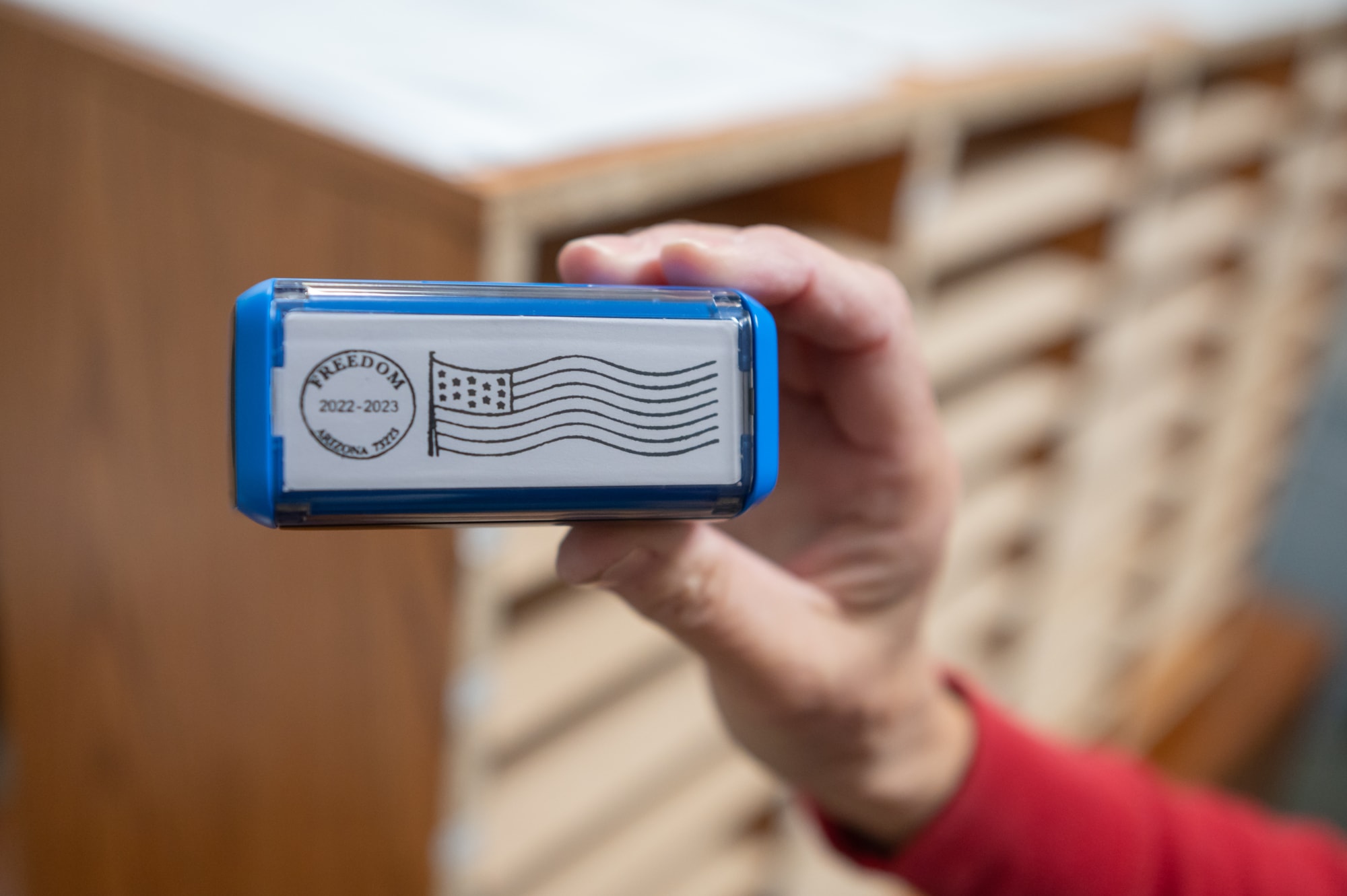
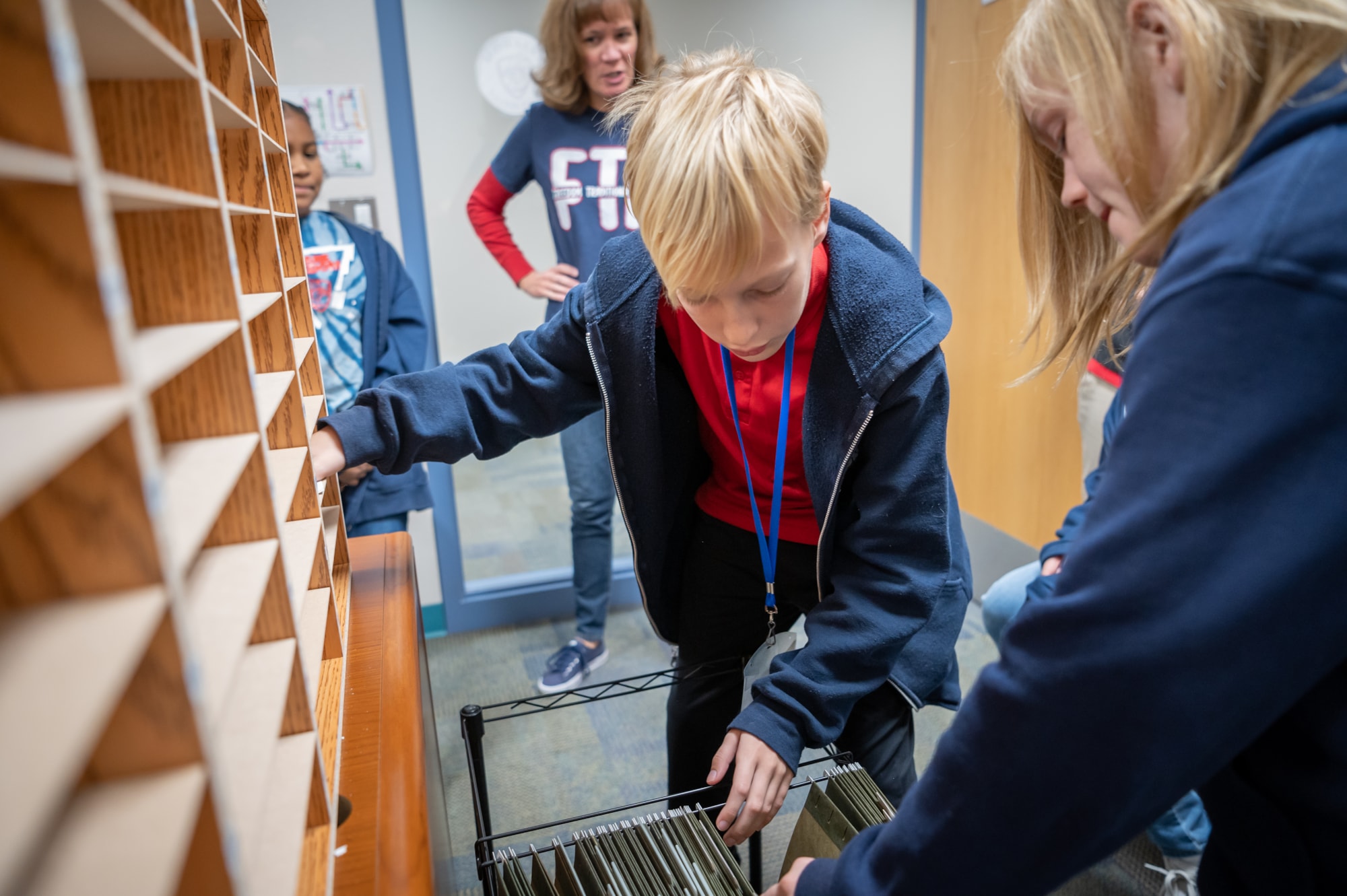
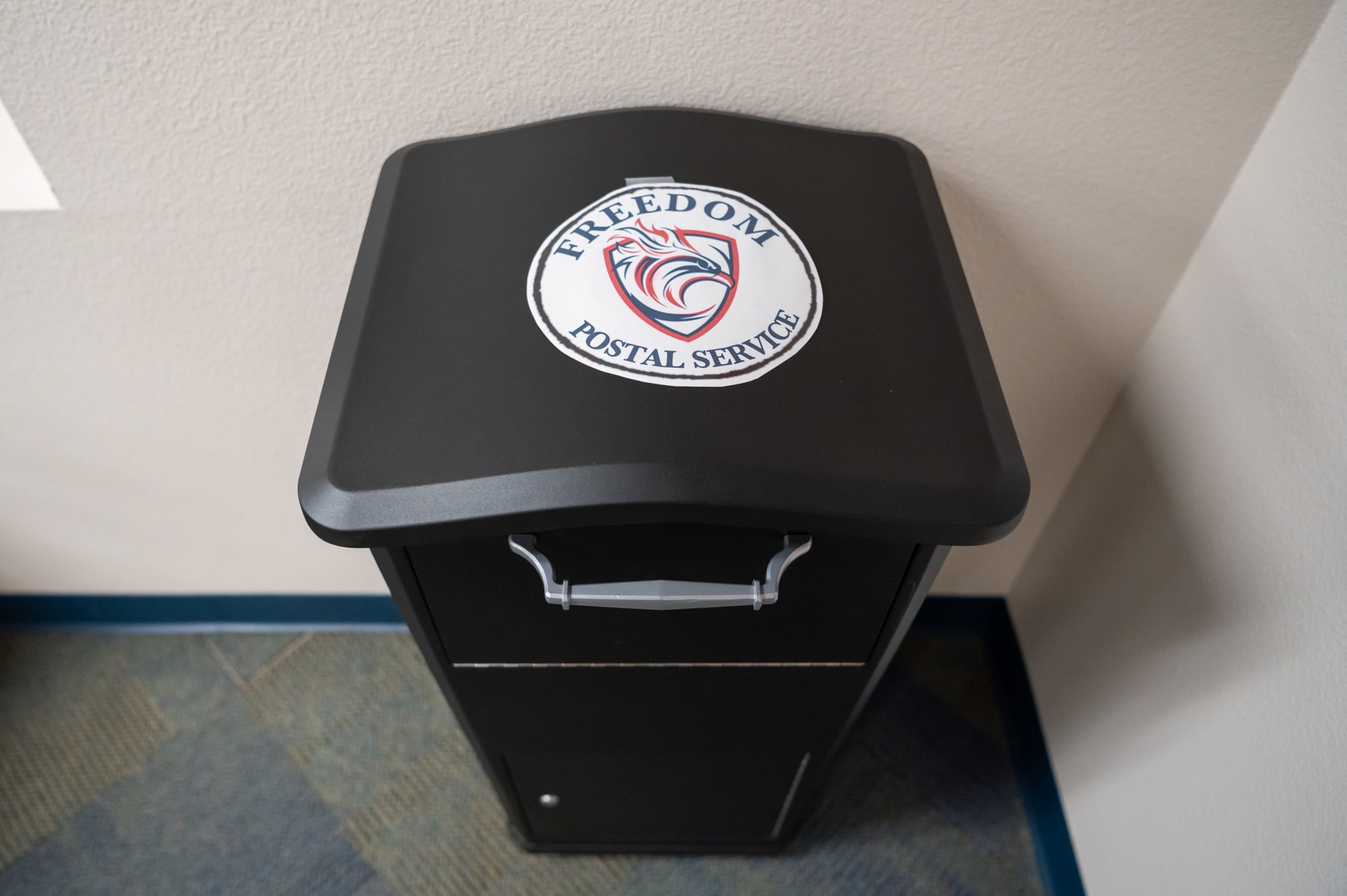
“They can create their own stamp, they can make a stamp, they can draw a stamp, they can use a sticker as a stamp. But there has to be some sort of a stamp,” said Mrs. Johnson.
“And if there’s no stamp, then the students would return to sender. And we try to circle the area that’s a problem so that hopefully the teacher can help the student learn why this is coming back to you.”
Next the school had to develop a way for the mail to be gathered, sorted, and delivered. What better way to teach students about how the post office works than to select a group of students to “work” the school post office? The Freedom Postal Service has a mailroom in the building that is operated by a select group of students who were required to successfully complete an application and interview process.
“We are trying to build leaders, and so we want the students to step up and apply for the job,” said Mrs. Johnson. “We want them to want to do the job, we want them to put in the time, and you know, do the best they can for our school. And so the goal is to develop great leaders and taking on a leadership role like that is a big responsibility.”
Mail is processed and delivered every week on Friday to Freedom students and staff. And just like the regular post office, Freedom has jobs and responsibilities for each student participating in the program. The postmaster is responsible for all the employees, picks up mail from the central mail drop, helps train new employees, and fills in for absent employees.
The Freedom Traditional Academy Sorter takes the mail to be delivered and sorts it by “streets” so that they can be delivered. Each hallway has a street name in the school and room numbers serve as the street number to complete the address.
The central mail drop is seen in the front area of Freedom Traditional Academy. Parents and staff can drop off their letters in this large mail box, which will be collected, sorted, and delivered on each Friday at the school.
“I love any situation where it has them be responsible,” said Abbey Rasmussen, mother of Nash, a student at Freedom. “Nash got to be the Postmaster, which he was really excited about, and I thought it was great because it taught him great responsibility. He was in charge of a team. He had to come early, and I love that he was excited about it.”
“I’ve always been interested in how the post office works, so I wanted to see, and then I tried it and it was really fun,” said Nash Rasmussen. “I just like seeing everyone else work and helping them and how they got better.”
Additional jobs include the Facer, who places all envelopes the same way. The Canceller cancels all stamps. The Nixie Clerk checks addresses for proper form and punctuation and stamps letters “Return to Sender” if not correct. The sorter sorts mail by streets, places mail in sorting boxes, and rubber bands all letters to a specific address and places them in mailbag. Finally, the Letter Carrier delivers mail to designated addresses.
“I thought it was very exciting and fun for me because we actually had to learn how to work together more, and it was pretty cool,” said Shamiran Tamou, a 5th grader at Freedom.
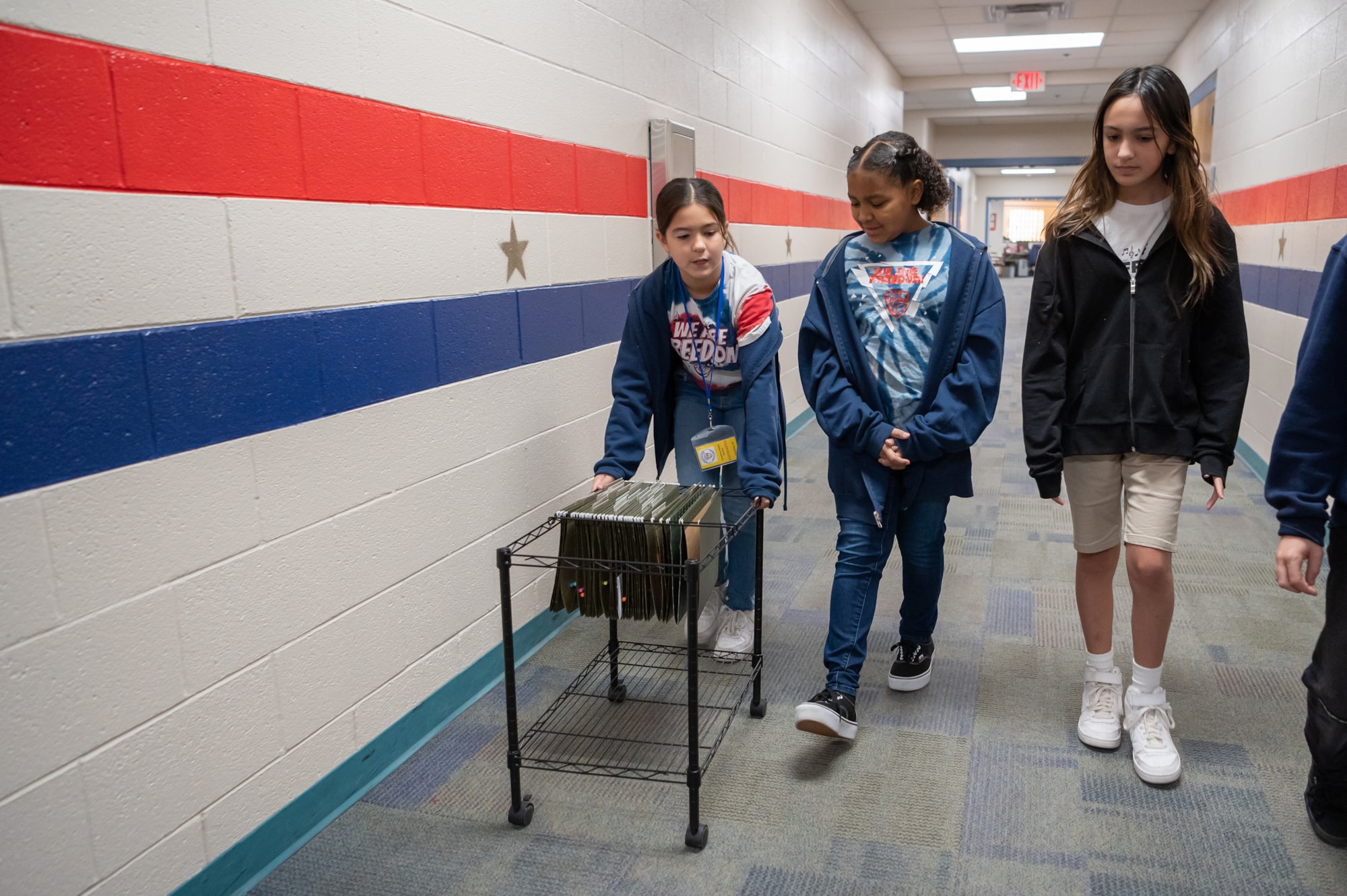
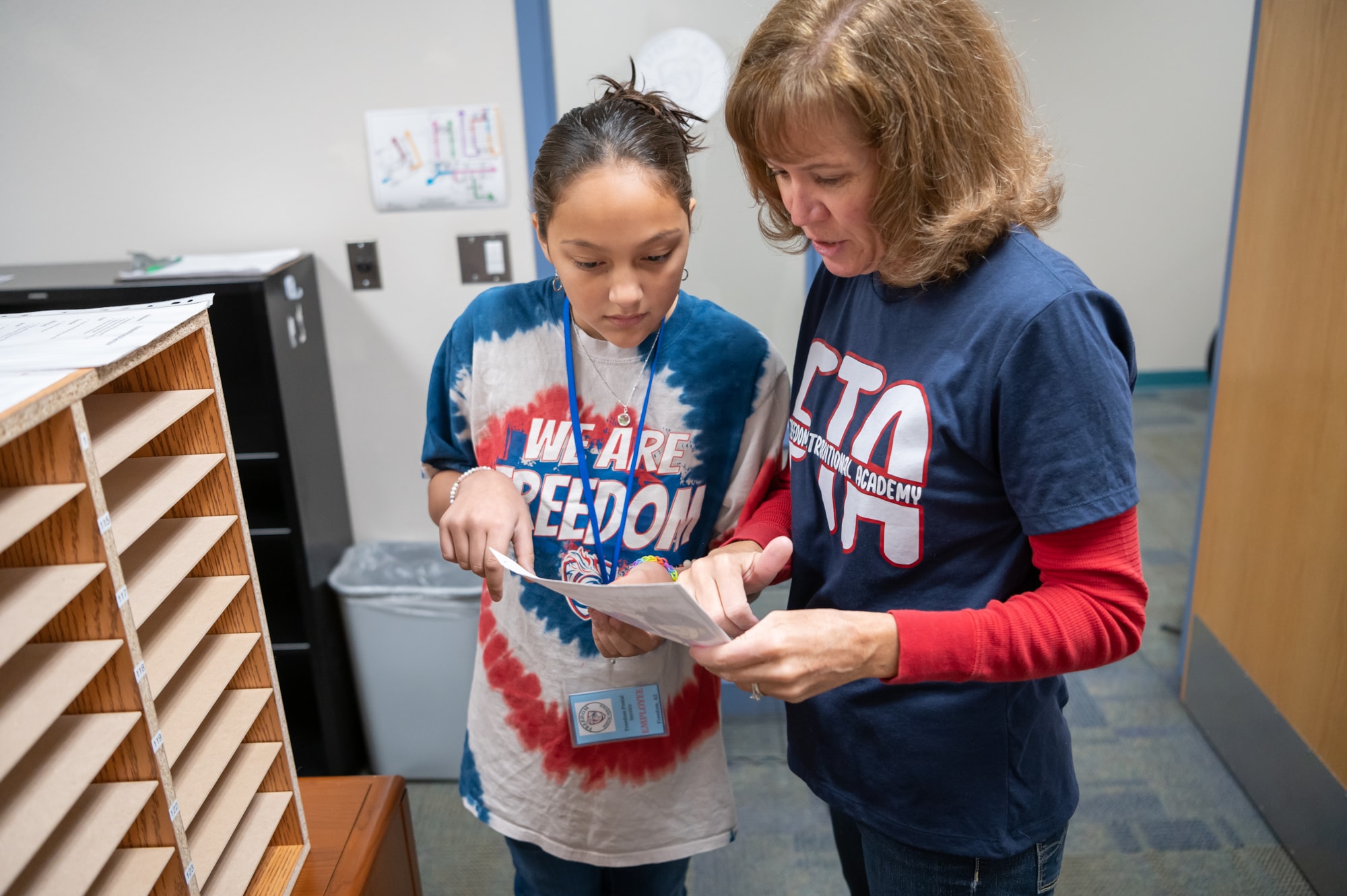
Teachers are providing knowledge of basic skills such as writing a letter, addressing envelopes, using the mail system, and using ZIP codes. The goal is that teachers are instructing at different levels on how to write a letter, what’s appropriate to put in the letter, and how to address and send a letter. Teachers will often times have their whole class write a letter to their buddy class, which allows a large number of students to receive mail.
As for who else writes letters, the sky’s the limit. Students are writing to siblings and other students, teachers, and staff. Office staff send birthday letters with little treats to the students. They’ll also send little jokes to the different classes. Parents are obviously encouraged to send letters to their students. It could be a birthday wish, good luck, a thank you, a thinking of you, or whatever they want.
“One of my students got a gift card reward from his parents in the mail because he had improved so much on something,” said Johnson. “Parents that are using it love it because it gives them another way to give their child a pick-me-up at the end of the week. And so the goal, the intention hopefully, is that in the future, the word just spreads that, you know, this is another way to communicate with your child.”
“I think it’s good for these kids to express themselves in a different way,” said Abbey Rasmussen. “I was able to write letters and drop them off in the middle of the day. They would get a letter from their mom saying ‘I love you, and I am proud of you.’ It’s another way to be kind and build someone else up and help them to be excited and have a good day.”
Besides teaching the students how to write a letter, how the post office works, and how having a job and responsibilities are important, the other dominant benefit of the program is community and culture.
“I think one of the big, big goals of the postal system is just to have a community feel throughout the school,” said Mrs. Johnson. “And so, you know, just like in your neighborhood, it just brings a community feel. And it’s just one more way that I feel like at our school, we try to make this feel like a family. And so, you know, that’s the goal.”
“It’s cool. It’s just fun to have something different that most schools don’t have,” said Nash Rasmussen.
04/03/2023



